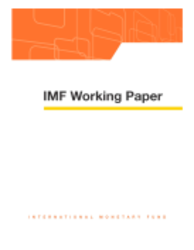
Taming Public Debt in Europe: Outlook, Challenges, and Policy Response
Taming Public Debt in Europe: Outlook, Challenges, and Policy Response
READ MORE...
Volume/Issue:
Volume 2024
Issue 181
Publication date: August 2024
ISBN: 9798400285806
$20.00
Add to Cart by clicking price of the language and format you'd like to purchase
Available Languages and Formats
| English |
Prices in red indicate formats that are not yet available but are forthcoming.
Topics covered in this book
This title contains information about the following subjects.
Click on a subject if you would like to see other titles with the same subjects.
Economics- Macroeconomics , Public Finance , Public debt , Government financing , Debt stabilization , Optimal fiscal path , stabilization probability , government debt holding , financing pressure , Fiscal consolidation , Fiscal stance , Government debt planning , Government debt management , Europe , Global
Summary
Public debt ratios in Europe increased significantly in response to the pandemic and energy shocks and have remained higher than before the pandemic in most countries. Going forward, the projected public debt trajectories are broadly flat overall in advanced Europe but have a rising profile in emerging Europe. Government financing needs are still elevated, and the unwinding of quantitative easing by major central banks adds to financing pressures. Moreover, there are important medium- to long-term spending pressures from defense, climate transition, and aging, which are not fully reflected in the projected baseline trajectories. Against this backdrop, the risk that debts will not stabilize in the medium term has increased. Debt stabilization will hinge critically on achieving ambitious fiscal consolidation and sustained growth. Facing these elevated risks, policymakers need to implement carefully-calibrated fiscal adjustments that ensure debt sustainability while supporting growth. They could target debt stabilization over a longer, 10-year, horizon—while adhering to credible fiscal rules such as the reformed EU Economic Governance Framework—but with a high probability to reassure markets that debts will indeed be tamed.
Copyright © 2010 - 2024
Powered by:
AIDC



